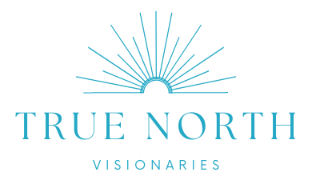How do Visioning exercises work?
For individuals
For individuals, the ideal full Visioning process takes about 8 weeks to complete. Each week, students complete exercises at their own pace, going through each part of the Visioning process – introspection, peeling back the layers, and creating a sound and successful Vision for your future, then solidifying it by sharing it.
As an ongoing exercise, I re-read my Vision on a regular basis and also use daily Visioning as explained further in this article.
For companies
For companies, you could do smaller Visioning exercises that can be a complement once you have a strong Company Vision in place. Get clear at the leadership level first. Once you’ve set your leadership vision, you can bring it to the rest of the company and then focus on involving them in smaller exercises.
The danger of involving teams before you’re clear on the company Vision, is that it will be harder to bring everyone’s threads back to one true north star. Once you have a clear objective and direction, you can bring in your team.
5 Visioning exercises you can do with your team in under 45 minutes
“Futurespective”: For 20 minutes, play the tape forward on a specific project.
Ask the team, “imagine that we FAILED and did not hit the goal. What would have to happen for us to do that?” everyone should contribute ideas like “we miss the deadline” or “our copy falls flat.”
Then ask, “Imagine that we SUCCEEDED beyond our wildest dreams. What did we do to do that?” everyone should contribute ideas like “we pushed things forward on our own despite roadblocks” or “our copy was fun, punchy and clickable.”
From this new list, write down what needs to happen in order to prevent #1 circumstances from happening, and move toward #2 circumnstances.
"Best Day Ever": Have team members describe their ideal day at work, including what tasks they would be working on and what the overall culture and environment would be like. Dogs in the office? Totally an option.
"Visioning Workshop": Facilitate a workshop where team members can brainstorm, discuss, and share their ideas and vision for the company or project, and collaborate to create a shared vision statement.
"Future Timeline": Have team members create a timeline of future events or developments for their company or industry, including both desired and potential challenges.
"Future Self": Have team members create a written or visual representation of their future self, describing how they have grown and changed as a result of achieving the desired vision.
“8 Week Clarity Accelerator”: Take the time to do the full, 8 week Visioning course with your team or as an individual.
"Storyboarding": Have team members create a visual storyboard that outlines the desired future state of the company or project, including key milestones and achievements. EG: “Launched my new business by 2024”.
"Backcasting": Have team members work backwards from their desired end state and create a plan for how to achieve it, identifying the necessary steps and milestones along the way.
"Future Walk": Have team members walk through a physical or virtual representation of their desired future state, experiencing it as if it were already a reality.
"Role-playing": Have team members act out scenarios set in the desired future state, discussing and addressing any challenges or obstacles they encounter.
Benefits of doing Visioning exercises together
Team Visioning exercises can have more benefits than just getting more employee buy-in.
Clarity of Purpose: It’s leadership’s responsibility to share the company Vision so members can gain a clear understanding of the organization's purpose and goals, and how their individual roles contribute to achieving them.
Increased engagement and motivation: When team members are able to see how their work contributes to the organization's overall mission, they may feel more engaged and motivated to put in extra effort.
Improved Communication: Visioning exercises can also help to improve communication within the team by encouraging members to share their ideas and perspectives.
Greater alignment: The visioning process helps to align the team to the same goal and direction, making sure everyone is on the same page and working towards the same outcomes.
Creativity: Visioning exercises can also help to generate new and innovative ideas, as team members are encouraged to think creatively and outside of the box.
Future-Focused: Visioning exercises helps the team to think about the future and the long-term goal. This can help the team to think about how to make the best use of the present to achieve the future goal. The Vision becomes a decision making filter.
Problem-Solving: Visioning exercises can also help teams to identify and solve problems that may be preventing them from achieving their goals.



